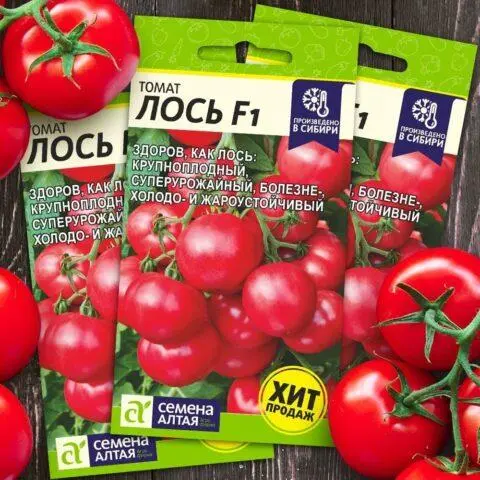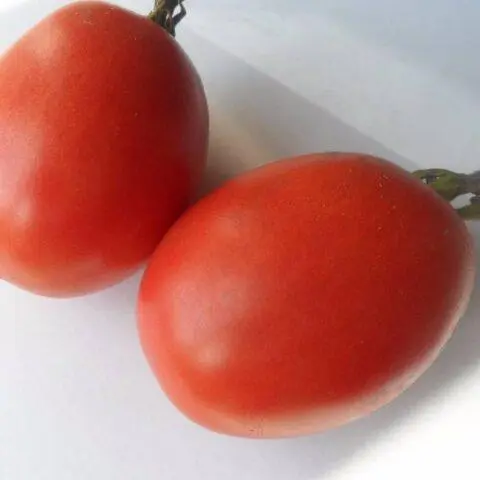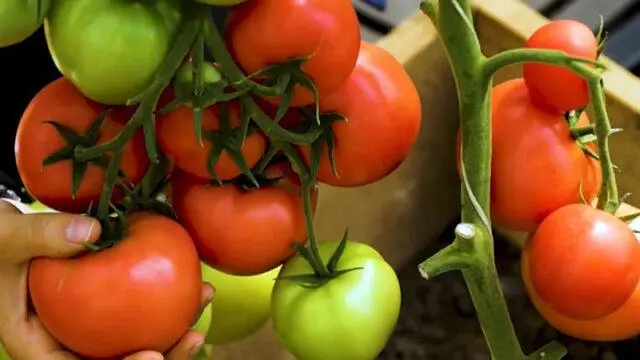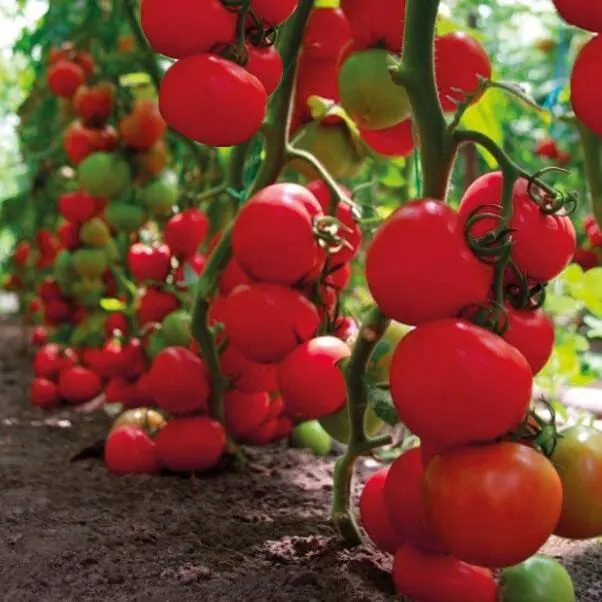Contents
Elk tomato is a high-yielding and early ripe tomato variety with excellent immunity to various diseases common among the crop. The plant is recommended for growing in greenhouses and hotbeds, but some gardeners plant it in open ground. The variety has appeared recently, but has already managed to gain confidence among summer residents and gardeners.

Tomato Elk bears fruit throughout the height of the plant
History of breeding
Elk is a hybrid of BIF-tomato, a variety of selection by the unique scientist of the times of the USSR Pavel Saraev. The manufacturer of planting material is the agricultural company Seeds of Altai. It is worth noting that the plant was tested in Siberia and showed itself well there, the novelty managed to become the sales leader in 2020.
Description of the Elk tomato variety with a photo
Tomatoes Elk f1, the description and images of which are presented below, are among the first to be on the table. The bushes of the variety are tall, powerful, well leafy, have a rich green color and very strong stems. Each plant forms 10-12 branches, which are literally strewn with large and beautiful fruits. In one season, a bush grown indoors can reach a height of 200-270 cm; when cultivated in open ground, it does not grow more than 140 cm. In an unripe form, the color of the tomato is green, in a ripe state it is raspberry-pink, without spots. The shape of the fruit is flat-round or elongated-round, leveled. The size of a tomato can be medium or large, the weight of each specimen usually varies from 150 to 250 g, but individual tomatoes can weigh up to 0,5 kg. The fruits are fleshy, have a good density, at the same time their skin is not thick. It is noteworthy that they ripen perfectly if they are removed from the bush half ripe. The pulp of the tomato is dense, non-watery, the seed chamber has a green color, which indicates an intense taste. Judging by the reviews, the tomato is very sweet, sugary, without signs of acid, with a pronounced tomato flavor.
Characteristics of tomato Elk
Tomato Elk has good cold resistance, able to withstand short spring frosts. The hybrid gives excellent results in any region, perfectly adapted to the conditions of Siberia. In addition, he feels good in hot greenhouse conditions. The high density of the tomato ensures transportability. The fruits lie perfectly without loss of taste for two weeks after harvest. Due to its marketability and ability to be transported over long distances, the variety can be grown for sale.

Tomato Elk remarkably shows its qualities in all types of greenhouses
Elk tomato yield
According to the originators of the variety, Elk is a high-yielding variety. If you properly care for the crop, up to 35 tomatoes can be harvested from one plant, and from 7 to 10 kg of ripe fruits per square meter of plantings. It is worth noting that the variety has no problems with setting both at high and at low temperatures. Tomato begins to sing early, the first mature fruits are harvested 95-110 days after sowing the seeds. In the greenhouses of the manufacturer’s company, the variety showed a productivity of 40 kg from the garden.
Disease and pest resistance
Elk – a tomato is quite disease-resistant. A wide range of diseases is completely harmless to culture, which is why it got its name “a tomato is healthy like an elk.”
Methods of Use
Gardeners who grow Elk tomato note that the plant has excellent taste. Most often, this type of culture is eaten fresh, and is also used to make salads and vegetable cuts. Some housewives make preparations for the winter from the fruits, preserve the juice, but note that it is a pity to wrap such a tasty and large vegetable in jars.
Advantages and disadvantages
Since the Elk tomato is a recently bred hybrid, it is still impossible to objectively say about its advantages and disadvantages.

Elk bushes require load regulation
Advantages:
- precocity;
- high yield;
- excellent taste qualities;
- keeping quality;
- transportability;
- winter hardiness;
- resistance to diseases;
- universal application.
Disadvantages:
- high cost of planting material;
- the need for regular formation;
- average seed germination.
Peculiarities of growing
First of all, the Elk tomato is recommended for growing in a greenhouse. Planting requirements are the same as for other crop varieties. For seedlings, tomatoes begin to be planted in March-April. To do this, follow the following instructions:
- Sow the seeds in a container with lightly compacted soil.
- Sprinkle with a layer of soil or peat (1 cm).
- Pour through a sieve with warm water.
- Cover the containers with transparent material and clean in a warm place with a temperature of about +25 ° C.
- When shoots appear, the film is removed, and the pots are placed in a well-lit place.
- During the week, the temperature is kept in the region of + 15-16 ° C, then it is increased to +22 ° C.
- When a pair of true leaves appears, the seedlings swoop down in separate cups.
Seedlings are planted in greenhouses or open ground in May-June when one flower brush appears. The place should be sunny and windless. Warm, settled water is used to moisten tomato beds, and in greenhouse conditions it is advisable to use the drip irrigation method so that the soil gradually absorbs water throughout the day. The site should be weeded and loosened in a timely manner, so the earth will be better saturated with oxygen. It is necessary to fertilize Elk tomato at the time of flowering with potassium-phosphorus compounds, as well as at the stage of planting seedlings, at the beginning of the growing season and when fruits are set, with mineral dressings. As the tomato stalks grow, Elk must be tied up. Since the plant is indeterminate, it does not top, but requires constant pinching. When grown in two stems or more, it can go into a split.

In open ground, the variety is more difficult and harder to grow.
Pest and disease control
Despite the fact that the Elk tomato has a very good immunity to many diseases and pests, it is still worth taking preventive measures against a number of common crop ailments. Sometimes a plant can be infected with phytophthora, if this happens, then the fight against the disease should immediately begin. To do this, use special tools: Hom, Fundazol. Folk methods are also suitable: spraying with a garlic-manganese solution or iodine.
As preventive measures, before planting seedlings, greenhouses should be sanitized, plants should be dusted with a mixture of tobacco dust and wood ash or Fitosporin, Baikal EM preparations.
Conclusion
Tomato Elk is a new hybrid of a culture of early ripening. Variety with high palatability and good keeping quality. Reviews of gardeners about the plant are biased and contradictory. To evaluate the variety and determine whether it is suitable for abundant plantings, it is advisable to initially plant several tomato bushes for testing.










